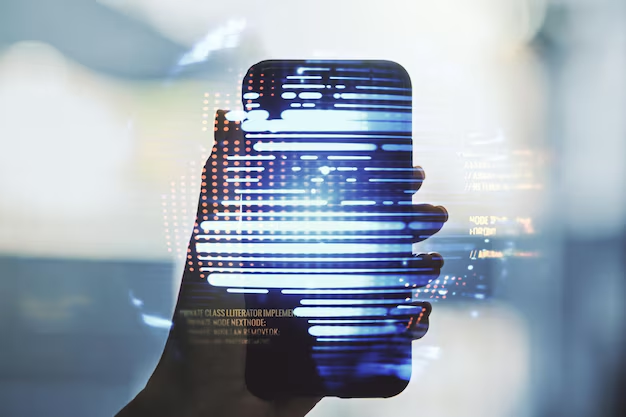Seamlessly Transfer Data from One Phone to Another: A Complete Guide
In today's fast-paced digital world, upgrading to a new smartphone can be both exciting and stressful. One of the main concerns during this process is ensuring that all your important data—contacts, photos, messages, and more—makes its way to your new device without a hitch. Let's delve into the most efficient ways to transfer data from one phone to another, unraveling a world where you switch devices like a pro without losing a byte of information.
📲 Understanding the Basics of Data Transfer
Switching phones involves more than just moving your SIM card to a new device. It's crucial to ensure that all your personal data and settings transition smoothly. This not only includes contacts and photos but also app data, emails, and sometimes even passwords. Here’s how you can do it effortlessly:
Backup is Your Best Friend
Before you begin any data transfer, backing up your data is essential. This might seem like an added step, but it's a safety net ensuring you don't lose anything important if something goes awry.
Cloud Backup:
- Android Users: Utilize Google Drive or Samsung Cloud for a complete backup.
- Apple Users: iCloud is your go-to option.
Local Backup:
- Via Computer: Connect your phone to a computer and use software like iTunes for iOS devices or third-party tools for Android phones.
- External Storage: Save important files to an SD card or external USB storage.
📱 Transfer Methods for Different Scenarios
Transferring data can vary depending on the operating systems involved. Let's explore various transfer methods to cater to different scenarios:
🌟 Android to Android
The process is generally seamless thanks to built-in tools:
Google Account Transfer: Sign in to your Google account on your new device, and your apps, contacts, emails, and calendar entries should sync automatically.
Android's Built-in Transfer Tools:
- Use Nearby Share or Android Beam for a quick transfer if both devices are close by.
Manufacturer Support Apps:
- Samsung Smart Switch: A robust app to transfer messages, photos, contacts, and more between Samsung devices and even other Android phones.
- Huawei Phone Clone: Simple tool to migrate data between Huawei phones.
🍏 iPhone to iPhone
Apple makes it straightforward with integrated features:
- Quick Start: Place your old and new iPhones close to each other and follow on-screen instructions for a direct transfer.
- iCloud Restore: Backup your old phone to iCloud and restore it on your new device by signing in with your Apple ID.
🔄 Android to iPhone (and vice versa)
Switching between these distinct ecosystems requires a bit more effort:
- Move to iOS App: For Android to iPhone transfers. This app moves contacts, message history, photos, and more directly to your new iPhone.
- Google Drive and Google Services: If moving from iPhone to Android, uploading data like contacts and photos to Google Drive can facilitate the process.
📚 Cross Platform Tools
For those who prefer third-party solutions, several apps offer cross-platform services:
- PhoneTrans
- MobileTrans
These apps support various data types and offer a user-friendly experience.
🌐 Navigating Connectivity Options
Depending on your network setup and data size, connectivity plays a significant role:
- WiFi vs. Cellular Data: WiFi is preferred for larger data transfers, ensuring faster speeds and avoiding data overages.
- USB and OTG Cables: Direct wired connections often provide the quickest, most reliable transfer speeds.
- Bluetooth: Best for small data chunks, like transfers between accessories or minor file exchanges.
📋 Practical Tips and Takeaways
Switching phones can be overwhelming but following a structured plan and using the right tools is key. Here are some summarized practical tips for your phone transition journey:
- 🔄 Always Backup First: Data integrity begins with a robust backup strategy.
- 📊 Use the Right Tools: Leverage native apps (Google Drive, iCloud, etc.) and manufacturer's software for seamless transfers.
- 🔌 Connectivity Matters: Opt for high-speed connectivity and wired options when possible to ensure a smooth experience.
Summary Table: Key Steps in Data Transfer
| Step | Description | Emoji |
|---|---|---|
| Backup Data | Use cloud services or local backups to secure data | ☁️ |
| Select Transfer Method | Choose between built-in, manufacturer, or third-party tools | 🔄 |
| Use Reliable Connectivity | Prefer WiFi or USB for large data transfers | 📶 |
| Final Checks | Ensure all data is transferred before factory resetting the old phone | 🛡️ |
Ensuring a Smooth Transition with Final Insight
Switching phones doesn't have to be a daunting experience filled with the dread of data loss. By understanding the tools at your disposal and employing smart transfer strategies, you not only protect your personal information but also enjoy a seamless transition to your new device. Remember, preparation is paramount—a well-planned transfer process will save time and headaches, allowing you to enjoy your new phone right from the outset. Embrace the change with confidence and ensure every piece of your digital life goes along for the ride.

Related Topics
- How Can I Transfer Data From One Laptop To Another
- How Can I Transfer Domain To Godaddy
- How Can I Transfer My Calls To Another Phone
- How Can I Transfer Pdf To Word
- How Can We Transfer Data From One Laptop To Another
- How Can You Transfer Emails From One Account To Another
- How Can You Transfer Vhs Tapes To Dvd
- How Do I Transfer a Prescription From Walgreens To Cvs
- How Do I Transfer Data From Ipad To Ipad
- How Do I Transfer Emails From Outlook To Gmail